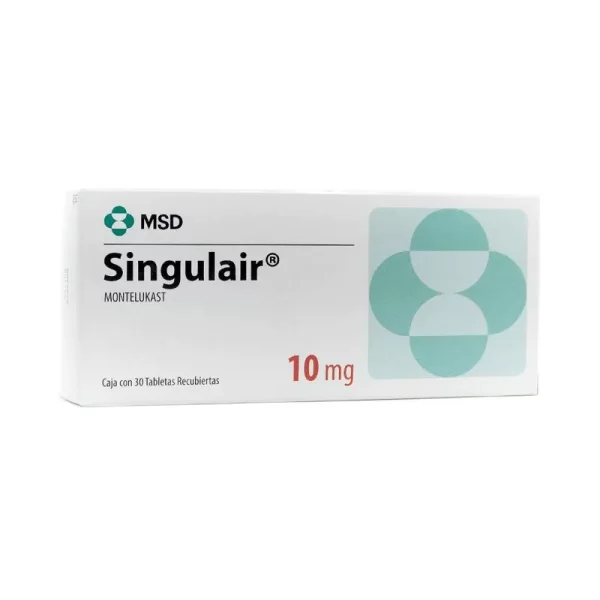
Clonidine
Clonidine - 1mg
Overview of Clonidine
General Introduction to Clonidine
- Clonidine is a medication primarily used to treat high blood pressure (hypertension). It is also prescribed for conditions such as attention deficit hyperactivity disorder (ADHD), anxiety disorders, certain pain conditions, and withdrawal symptoms from opioids or alcohol. Clonidine works by stimulating alpha-2 adrenergic receptors in the brain, which helps decrease blood pressure by reducing the heart rate and relaxing blood vessels. It is available in various forms, including oral tablets, transdermal patches, and injectable formulations.
Key Benefits and Unique Properties of Clonidine
- Effective Blood Pressure Control: Clonidine helps manage hypertension by reducing sympathetic outflow from the central nervous system.
- Versatile Therapeutic Uses: Beyond hypertension, it is effective for ADHD, anxiety disorders, pain management, and managing withdrawal symptoms.
- Multiple Administration Routes: Available in oral, transdermal, and injectable forms, providing flexibility for patients and healthcare providers.
- Rapid Onset: Provides quick relief from symptoms, especially when used in acute settings like hypertensive crises.
- Non-Opioid Option for Pain: Offers an alternative to opioids for pain management, helping reduce the risk of dependence.
Effectiveness of Clonidine
- Clinical studies have demonstrated Clonidine's effectiveness in managing hypertension, reducing ADHD symptoms, and alleviating withdrawal symptoms. Its versatility in treating various conditions makes it a valuable medication in clinical practice.
Safety and Tolerability of Clonidine
- Clonidine is generally well-tolerated, but it is associated with certain side effects. Common side effects include drowsiness, dry mouth, constipation, and dizziness. Serious side effects can include hypotension, bradycardia, and rebound hypertension upon abrupt discontinuation. Regular monitoring and adherence to prescribed dosages can minimize these risks.
Indications for Use of Clonidine
Diseases and Conditions Treated by Clonidine
- Clonidine is indicated for the treatment of hypertension, ADHD, anxiety disorders, pain management, and withdrawal symptoms from opioids or alcohol.
Primary Symptoms and Indications for Clonidine
- Hypertension: Effectively lowers blood pressure by reducing sympathetic outflow and relaxing blood vessels.
- ADHD: Helps improve attention span, impulse control, and reduces hyperactivity in children and adults.
- Anxiety Disorders: Reduces symptoms of anxiety by calming the nervous system.
- Pain Management: Provides relief from certain types of pain by modulating pain signals in the nervous system.
- Withdrawal Symptoms: Alleviates symptoms associated with opioid or alcohol withdrawal, such as agitation, anxiety, and muscle aches.
Dosage and Administration of Clonidine
Recommended Dosage of Clonidine
- The dosage of Clonidine varies based on the condition being treated. For hypertension, the usual starting dose is 0.1 mg twice daily, which can be gradually increased. For ADHD, the typical starting dose is 0.1 mg at bedtime, with dose adjustments based on patient response. For withdrawal symptoms, doses can range from 0.1 mg to 0.3 mg twice daily.
Timing and Frequency of Clonidine Administration
- Hypertension: Typically taken twice daily, with doses gradually increased based on patient response.
- ADHD: Usually taken once daily at bedtime, but can be divided into two doses if needed.
- Withdrawal Symptoms: Taken twice daily, with doses adjusted based on symptom control.
Additional Recommendations for Clonidine Use
- Proper Use: Follow the dosing instructions provided by a healthcare professional. Clonidine can be taken with or without food.
- Missed Dose: If a dose is missed, take it as soon as remembered unless it is almost time for the next dose. Do not double the dose to make up for the missed one.
- Monitoring: Regular follow-up appointments with a healthcare provider can help monitor the effectiveness of the medication and any potential side effects.
Mechanism of Action of Clonidine
Description of Clonidine Mechanism
- Clonidine works by stimulating alpha-2 adrenergic receptors in the brain, leading to a decrease in sympathetic outflow. This results in reduced heart rate and relaxation of blood vessels, which lowers blood pressure.
Biochemical Processes Involving Clonidine
- Receptor Stimulation: By activating alpha-2 adrenergic receptors, Clonidine reduces the release of norepinephrine, a neurotransmitter involved in the regulation of blood pressure.
- Neurotransmitter Modulation: Helps modulate pain signals and reduce anxiety by affecting various neurotransmitter pathways in the central nervous system.
Physiological Effects of Clonidine
- Blood Pressure Reduction: Lowers blood pressure by decreasing heart rate and dilating blood vessels.
- Symptom Relief in ADHD: Improves attention, reduces hyperactivity, and enhances impulse control.
- Anxiety Reduction: Calms the nervous system, reducing symptoms of anxiety.
- Pain Relief: Modulates pain signals, providing relief from certain types of pain.
Composition of Clonidine
- Ingredients in Clonidine
- Clonidine contains the active ingredient clonidine hydrochloride, which is responsible for its therapeutic effects.
- Inactive ingredients in Clonidine formulations may include lactose, magnesium stearate, microcrystalline cellulose, and other excipients that help stabilize the formulation and ensure proper delivery of the medication.
Side Effects of Clonidine
General Introduction
- Understanding potential side effects helps ensure the safe use of Clonidine. Patients should be aware of common and serious side effects to monitor their health effectively while on the medication.
Possible Side Effects of Clonidine
- Common Side Effects: Drowsiness, dry mouth, constipation, and dizziness.
- Less Common Side Effects: Fatigue, headache, and abdominal pain.
- Serious Side Effects: Rare but serious side effects include hypotension, bradycardia, rebound hypertension upon abrupt discontinuation, and severe allergic reactions.
Frequency and Severity of Clonidine Side Effects
- Common side effects are generally mild and manageable with dose adjustments and supportive care. Serious side effects are rare but can be life-threatening, necessitating immediate medical intervention. Regular follow-ups and patient education on correct usage can minimize risks.
Prevention of Side Effects of Clonidine
General Introduction
- Preventing side effects is key to maximizing the therapeutic benefits of Clonidine. By following preventive measures, patients can reduce the likelihood of experiencing adverse reactions.
Tips for Preventing Clonidine Side Effects
- Proper Technique: Use Clonidine as directed, following the instructions for proper administration.
- Regular Monitoring: Regular check-ups with healthcare providers can help detect and manage potential side effects early.
- Consult Healthcare Providers: Inform your healthcare provider about any other medications or supplements to avoid potential interactions.
- Hydration and Nutrition: Maintain adequate hydration and a balanced diet to support overall health.
- Avoid Abrupt Discontinuation: Do not stop Clonidine suddenly without consulting a healthcare provider to prevent rebound hypertension.
Contraindications for Clonidine
General Introduction
- Understanding contraindications ensures the safe use of Clonidine. Certain conditions and diseases may preclude the use of this medication.
Conditions and Diseases Contraindicating Clonidine
- Hypersensitivity: Patients with a known hypersensitivity to clonidine or any of its components should not use this medication.
- Severe Bradyarrhythmias: Use with caution in patients with severe bradyarrhythmias, as Clonidine can further reduce heart rate.
- Severe Cardiovascular Disease: Use with caution in patients with severe cardiovascular conditions, as it can affect heart rate and blood pressure.
Warnings/Precautions for Clonidine
General Introduction
- Following precautions is essential to ensure the safe and effective use of Clonidine. Patients should be informed about potential risks and how to mitigate them.
Important Warnings for Clonidine
- Drowsiness and Sedation: Clonidine can cause significant drowsiness and sedation. Patients should avoid driving or operating heavy machinery until they know how the medication affects them.
- Rebound Hypertension: Abrupt discontinuation of Clonidine can lead to rebound hypertension. Taper off the medication gradually under the guidance of a healthcare provider.
- Electrolyte Imbalance: Use with caution in patients with electrolyte imbalances, as this can affect the effectiveness and safety of Clonidine.
Precautions for Clonidine Use
- Regular Monitoring: Regular check-ups with healthcare providers are essential to monitor for potential side effects and ensure effective treatment.
- Patient Education: Educate patients on the signs and symptoms of serious side effects and when to seek medical help.
- Lifestyle Adjustments: Encourage lifestyle modifications such as maintaining a balanced diet, regular exercise, and avoiding known allergens to support overall health.
Missed Dose of Clonidine
General Introduction
- Proper management of missed doses helps maintain effective treatment outcomes. Patients should be aware of how to handle missed doses to avoid disruptions in their treatment regimen.
Steps to Take if a Dose is Missed
- Timely Action: Take the missed dose as soon as remembered unless it is almost time for the next dose.
- Avoid Doubling: Do not double the doseto make up for the missed one. Instead, continue with the next dose as scheduled.
Tips for Adherence to Dosing Schedule
- Set Reminders: Use alarms or reminders on your phone to remember to take your doses.
- Consistent Routine: Take the medication at the same time every day to reduce the likelihood of missing a dose.
- Medication Organizer: Use a pill organizer to keep track of your doses and avoid missing any.
Drug Interactions with Clonidine
General Introduction
- Understanding drug interactions is crucial for ensuring the safe use of Clonidine. Some medications can affect the action of Clonidine or increase the risk of side effects.
Examples of Drug Interactions
- Antihypertensives: Concurrent use with other antihypertensive medications can enhance the blood pressure-lowering effects, increasing the risk of hypotension.
- CNS Depressants: Co-administration with central nervous system depressants, such as sedatives or alcohol, can increase the sedative effects of Clonidine.
- Beta-Blockers: Combining Clonidine with beta-blockers can enhance the risk of bradycardia and hypotension. Discontinuing Clonidine while on beta-blockers can lead to severe rebound hypertension.
Preventing Negative Interactions
- Inform Healthcare Providers: Inform your healthcare provider about all medications and supplements you are taking.
- Monitor for Symptoms: Watch for signs of side effects or unusual reactions and report them to your healthcare provider promptly.
- Read Labels Carefully: Check labels for potential interactions with other medications, especially over-the-counter drugs that may also contain similar active ingredients.
Overdose of Clonidine
Symptoms of Overdose
- Common Symptoms: Overdose can lead to symptoms such as severe drowsiness, slow heart rate, low blood pressure, and weakness.
- Severe Symptoms: Severe overdose may result in significant cardiovascular symptoms, respiratory depression, and loss of consciousness.
Immediate Actions in Case of Overdose
- Seek Medical Help: Immediately seek medical attention if an overdose is suspected.
- Supportive Measures: Medical personnel may provide supportive measures such as monitoring vital signs, administering intravenous fluids, and managing symptoms.
Pharmacokinetics of Clonidine
Absorption
- Rate and Extent: Clonidine is rapidly absorbed after oral administration, with peak plasma concentrations occurring within 1 to 3 hours.
Distribution
- Tissue Distribution: Clonidine is widely distributed throughout the body and is approximately 20-40% protein-bound.
Metabolism
- Metabolic Pathways: Clonidine is metabolized in the liver, with about 50% of the dose being excreted unchanged in the urine.
Elimination
- Excretion: The drug is excreted mainly through the urine, with a half-life of about 6 to 20 hours in adults.
Dosage Forms of Clonidine
Available Forms and Strengths
- Oral Tablets: Typically available in 0.1 mg, 0.2 mg, and 0.3 mg strengths.
- Transdermal Patches: Available in various strengths, providing a consistent release of medication over a week.
- Injectable Form: Available for acute management of hypertensive crises.
Advantages of Different Forms
- Oral Tablets: Convenient for daily use and easy administration.
- Transdermal Patches: Suitable for patients who require a steady release of medication and prefer not to take daily tablets.
- Injectable Form: Provides rapid onset of action for acute management of hypertensive crises.
Pregnancy and Breastfeeding
Safety During Pregnancy
- Risks to Fetus: The safety of Clonidine during pregnancy has not been fully established. It should be used during pregnancy only if clearly needed and prescribed by a healthcare provider.
- Recommendations: Pregnant women should use Clonidine under the guidance of a healthcare provider, weighing the potential risks and benefits.
Safety During Breastfeeding
- Excretion in Breast Milk: Clonidine is excreted in breast milk in small amounts. The effects on a nursing infant are not well-documented, but potential risks should be considered.
- Recommendations: Consult a healthcare provider before using Clonidine while breastfeeding to ensure safety for both mother and baby.
Storage Conditions
General Storage Recommendations
- Storage Temperature: Store at room temperature between 20°C to 25°C (68°F to 77°F).
- Protection from Light and Moisture: Keep in the original packaging, protected from light and moisture.
Shelf Life
- Expiration Date: Check the expiration date on the package and do not use the medication after it has expired.
Clinical Trials and Efficacy
Overview of Clinical Trials
- Study Design and Methods: Clinical trials include randomized controlled trials assessing the efficacy and safety of Clonidine in treating hypertension, ADHD, and other conditions.
Key Findings and Conclusions
- Efficacy Results: Studies have shown that Clonidine effectively reduces blood pressure, improves symptoms of ADHD, and alleviates withdrawal symptoms.
- Safety Profile: Side effects are generally manageable with dose adjustments and monitoring. Serious side effects are rare when used correctly.
Conclusion
Summary of Key Aspects:
- Clonidine is a versatile medication for managing hypertension, ADHD, anxiety disorders, pain, and withdrawal symptoms. It offers significant benefits in symptom relief and multiple administration routes for flexibility in treatment.
Recommendations for Improving Therapy:
- Follow healthcare professional instructions, adhere to prescribed dosages, and attend regular check-ups to optimize treatment and minimize side effects. Monitoring and adjusting lifestyle factors, such as maintaining a balanced diet and regular exercise, can further enhance the therapeutic benefits.
Final Conclusion:
- Clonidine provides essential support in managing various conditions, helping to improve the quality of life for patients. Proper use and adherence to precautions maximize the therapeutic benefits and minimize risks, offering substantial improvements in patient health and well-being.





